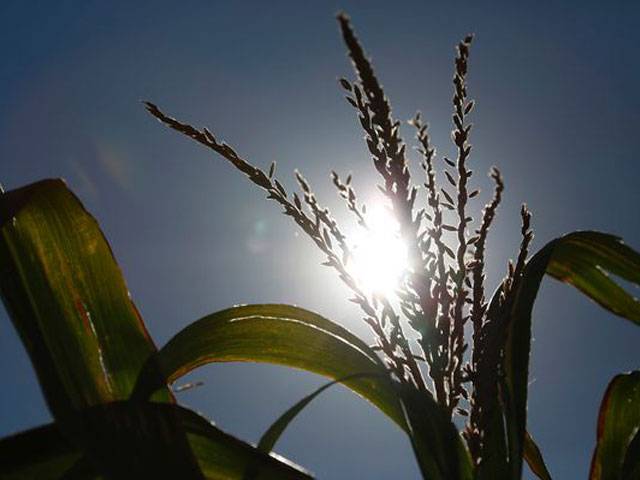LAHORE - At a time when the need for more food is growing because of an uncontrolled increase in population every year, more and more lands are being taken over for housing schemes and other projects. As a result, lands for agricultural purposes are shrinking with the passage of time, raising an alarm for food shortages in the future.
Still more deplorable is the fact that no government – the incumbent or the previous ones—maintained any records of the area being ‘captured’ for non-agricultural uses.
According to information gleaned by TheNation after much effort, Lahore alone lost some 20,000 acres to housing, factories and other non-agricultural activities during past 10-12 years. No record is available for other districts of the province, which feeds all food deficient regions.
However, it is confirmed that merciless destruction of agriculture land is at full swing across the province. Some officials of the Housing Department said that the government, private and cooperative housing societies and private developers occupied hundreds of acres agriculture land in Faisalabad, Gujranwala, Shaikhupura, Narowal, Multan, Khanewal and other cities considered rich for agriculture growth.
“The population of Punjab has increased 24 per cent touching the figure of 100 million in past 12 years which presents the challenge to address issue like economic development and poverty reduction and food security. The province is accommodating approximately 55 per cent of the total population with 26 per cent of the land area of the country,” commented an agriculture expert. He was of the view that based on the present growth patterns and trends the population of Punjab was expected to double after 35 years. The official feared that damaging of agriculture land would bring severe food crises in the province putting worst impact on total country’s population.
It has also been learnt through other sources that the Lahore Development Authority is developing a society on 3,000 acres agriculture land from Rohi Nullah to Kasur in a situation when near 25 colonies in the provincial metropolis are still half-colonised.
The official data shows the crop wise area reduction in Lahore district from 245,926 acres to around 230,000 acres for Rabi season and 219,920 to 190,000 acres for Kharif crops from year 2000 to 2012.
Latest data of the agriculture department about Lahore district shows the decrease of sowing of all major to minor crops including wheat, barley, pulses, oil seeds, spices, fodders, vegetables, rice, sugarcane, cotton and others.
The data of the Lahore district shows the area of rice sowing decreased from 96,991 acres to around 80,000 acres, sugarcane from 2718 acres to 988 acres, oil seeds from 264 acres to around 50 acres, Kharif spices from 630 acres to 161 acres, kharif fodders from 105022 to around 90,000 acres till 2012. In past 12 year, the total kharif crops area in Lahore shrunken from 219,920 acres to present around 190,000 acres ie around 30,000 acres. The trend continued in Rabi crops showing reduction of wheat from 1,51,997 acres to around 1,50,000, Rabi pulses from 363 acres to 40 acres, spices including garlic, coriander, onion and potato from 10,000 acres to 6,000 acres, rabi fodders from 72,156 acres to 5,8071 acres and Rabi vegetables from area of 11,000 acres to around 9,000 acres till 2012.
Top agriculture scientists of the country are of the view that lost of agriculture land would bring serious disaster to country’s economy and led the whole nation towards severe food shortage. “Total land area of Pakistan is nearly 197 million acres, while the population growth rate is 3.1 per cent annually. It has been estimated that throughout the country, everyday approximately 500 acres of farmland is taken out of agriculture,” said an agriculture expert. He predicted that if this trend continued then after every decade approximately a million acre or more of crop land would be taken out of agriculture in the country.
Sunday, May 26, 2024
Housing schemes on agri land – a threat to food shortage

Mercury soars to 50 Celsius in five districts of Sindh and Punjab
3:41 PM | May 26, 2024
K-Electric warns of power cut to Sindh govt over unpaid dues
10:19 AM | May 26, 2024
Efforts afoot to operationalise Punjab's first cancer hospital, says CM Maryam
10:17 AM | May 26, 2024
Taiwan Escalation
May 26, 2024
Salaries & Pensions
May 26, 2024
Controlling Mobs
May 26, 2024
An Effective Registry
May 25, 2024
Economic Respite
May 25, 2024
History’s Biggest Fraud
May 26, 2024
Self-Medication
May 26, 2024
A Call for Reform
May 26, 2024
Natural Resources in Balochistan
May 25, 2024
Tribal Disputes
May 25, 2024
ePaper - Nawaiwaqt
Advertisement
Nawaiwaqt Group | Copyright © 2024





